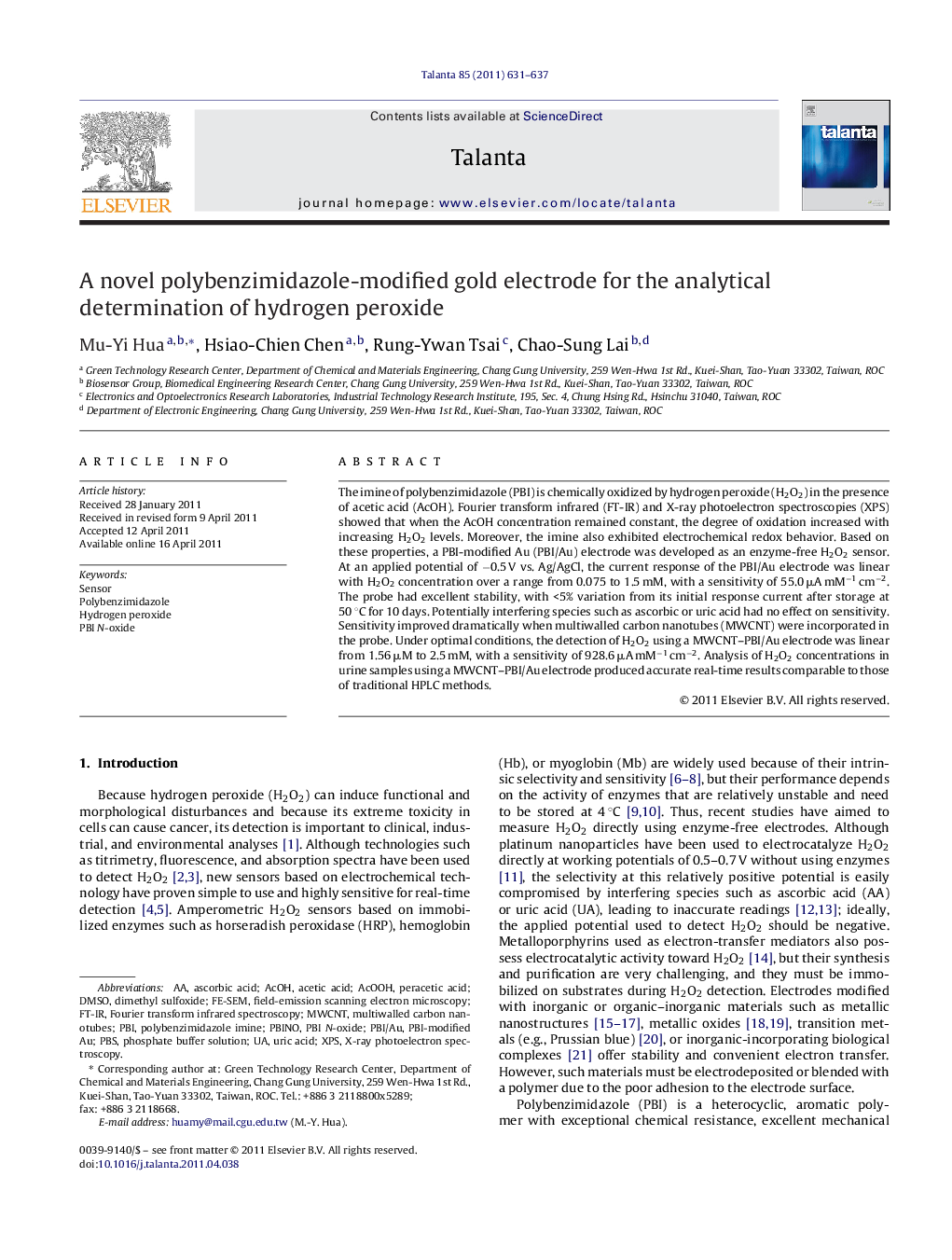| Article ID | Journal | Published Year | Pages | File Type |
|---|---|---|---|---|
| 10559847 | Talanta | 2011 | 7 Pages |
Abstract
The imine of polybenzimidazole (PBI) is chemically oxidized by hydrogen peroxide (H2O2) in the presence of acetic acid (AcOH). Fourier transform infrared (FT-IR) and X-ray photoelectron spectroscopies (XPS) showed that when the AcOH concentration remained constant, the degree of oxidation increased with increasing H2O2 levels. Moreover, the imine also exhibited electrochemical redox behavior. Based on these properties, a PBI-modified Au (PBI/Au) electrode was developed as an enzyme-free H2O2 sensor. At an applied potential of â0.5 V vs. Ag/AgCl, the current response of the PBI/Au electrode was linear with H2O2 concentration over a range from 0.075 to 1.5 mM, with a sensitivity of 55.0 μA mMâ1 cmâ2. The probe had excellent stability, with <5% variation from its initial response current after storage at 50 °C for 10 days. Potentially interfering species such as ascorbic or uric acid had no effect on sensitivity. Sensitivity improved dramatically when multiwalled carbon nanotubes (MWCNT) were incorporated in the probe. Under optimal conditions, the detection of H2O2 using a MWCNT-PBI/Au electrode was linear from 1.56 μM to 2.5 mM, with a sensitivity of 928.6 μA mMâ1 cmâ2. Analysis of H2O2 concentrations in urine samples using a MWCNT-PBI/Au electrode produced accurate real-time results comparable to those of traditional HPLC methods.
Keywords
PBSFE-SEMPBIAcOHMWCNTDMSOHydrogen peroxideAscorbic acidAcetic acidUric acidPeracetic acidSensorDimethyl sulfoxideX-ray photoelectron spectroscopyFT-IRFourier transform infrared spectroscopyXPSphosphate buffer solutionField-emission Scanning Electron MicroscopyMultiwalled carbon nanotubesPolybenzimidazole
Related Topics
Physical Sciences and Engineering
Chemistry
Analytical Chemistry
Authors
Mu-Yi Hua, Hsiao-Chien Chen, Rung-Ywan Tsai, Chao-Sung Lai,
